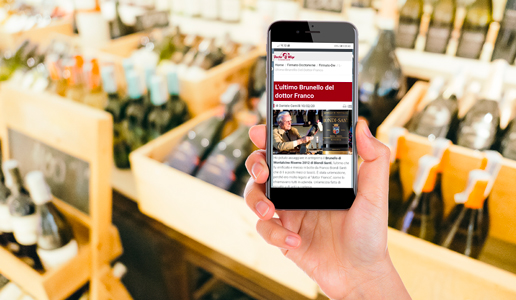Wine in the future

The boom in online sales, along with those in large retail distributors, will result in sales policy changes on the part of small and medium-sized enterprises in favor of a more “didactic” approach to communication in order to bring them closers to the consumer.
The end of the lockdown that we are beginning to experience, I hope with due caution, is unveiling the first indications of what the future holds for the world of wine and elsewhere. Some of these are already evident to all. There has been a boom in online sales and some websites, like Tannico and Vino75, are even running ads on TV which has resulted in a surge in business. Because wine shop and direct on-site winery sales were blocked during the lockdown, they were substituted by this form of commerce which soared in an unprecedented way. As restrictions begin to ease, it now remains to be seen whether this form of distribution was only due to the moment or whether it has changed consumer buying habits. Many people, in fact, have discovered the convenience of being able to buy wine online, from virtual wine shops, and have it delivered directly to their homes, something they did not do beforehand even though the possibility existed.
The lockdown also had a significant effect on large retail distributors, all the different types and sizes of supermarkets. These outlets were already a significant venue for wine sales, some say over two-thirds or more of the wine sold in Italy, especially for wines that cost seven euros or less. This too has changed and some more prestigious brands are now being offered in local supermarkets and not only those that have a tradition of selling higher quality wines, like Esselunga, Ipercoop and Eataly. What this would appear to indicate is that even small and medium-sized producers should review their sales policies towards these venues and it will not be easy. This unless they join together in a group in order to create a critical mass sufficient to meet the demand from supermarket chains. Thus in the future it is quite probable that we will see wines from smaller wineries in supermarkets, perhaps even with targeted products.
What also remains to be seen is how the market for prestigious brands and appellations holds up in the future. I have the distinct impression that here we will also see some changes with the emergence of new lead players, those who in the recent past have focused on producing wines with a good quality/price ratio. We might even also see a further increase in the regionalization of wine consumption.
Until wine exports are back on track, it will be necessary to bring back those consumers who, for whatever reason, have moved away from wine or never approached it. And this will entail adopting new forms of communication, those that are more in the interest of the consumer, more informative and less critical, more comprehensible and less elitist. This will need to be done on the part of producers as well as we in the media who “communicate”. We will have to increasingly be more like good middle and elementary school teachers, who are the best, and less like protagonists, in a somewhat self-referential way, on a wine stage that perhaps no longer exists.

 Italiano
Italiano







